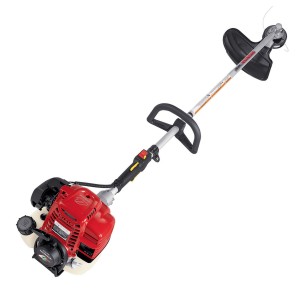 Ensuring a long life for any piece of power equipment means committing to regular, preventive maintenance that ensures the quality of everything from fuel filters to throttle cables. Most of these maintenance procedures and checks are detailed extensively in the Honda trimmer’s operator manual, which covers the required parts, necessary procedures, and the mandatory service intervals that assure a high-quality trimmer for many years to come. By following this schedule and taking a proactive approach to regular maintenance, operators will be less likely to suffer from serious malfunctions, engine problems, and even the need to purchase a full replacement for their Honda model.
Ensuring a long life for any piece of power equipment means committing to regular, preventive maintenance that ensures the quality of everything from fuel filters to throttle cables. Most of these maintenance procedures and checks are detailed extensively in the Honda trimmer’s operator manual, which covers the required parts, necessary procedures, and the mandatory service intervals that assure a high-quality trimmer for many years to come. By following this schedule and taking a proactive approach to regular maintenance, operators will be less likely to suffer from serious malfunctions, engine problems, and even the need to purchase a full replacement for their Honda model.
Follow Safety Guidelines When Conducting Trimmer Maintenance
Safety is tantamount when conducting maintenance, since some of the most important tasks involve getting very close to the trimming blades and the engine. Before performing maintenance tasks, make sure the engine has had sufficient time to cool down if the equipment was recently used. Conduct maintenance only in a well-ventilated area located indoors, on a solid surface. This will prevent complications posed by fumes and fluids that might otherwise injure the operator or even ignite. Make sure no pets or bystanders are nearby during maintenance and, if appropriate, wear safety attire to further guard against serious injuries.
Use the Maintenance Schedule and Other Tips When Performing Maintenance
The key component of regular maintenance is the included maintenance schedule, located in the Honda trimmer’s operator manual. This schedule specifies what must be checked before each use, what should be checked after a few hours of light use, and what must be done after more intensive trimmer use or prior to off-season storage of the equipment. A basic look at these requirements can be found below, split into the most common maintenance tasks required.
1. Oil Changes and Checks
The trimmer’s oil level should be checked prior to each use. Full engine oil changes need to occur after the first ten hours of use if the trimmer is brand new. For older trimmers, Honda recommends oil changes every six months or after every 50 hours of trimmer use around the home. Typically, trimmers are used in warmer conditions and therefore require 10W-30 oil.
2. Air Filter
The air filter should be checked after each use of the equipment. Regular cleaning of the air filter boosts equipment efficiency and long-term durability, and therefore should be conducted every 25 hours, or after each use in a very dusty area. A full replacement of the air filter should occur after 150 hours of use, or after 2 years, whichever comes first.
3. Spark Plug
Spark plugs require replacement after two years of trimmer service. To ensure easier ignition of the engine, trimmer owners may want to regularly inspect and clean the spark plug to ensure that dirt and carbon deposits aren’t inhibiting trimmer ignition or engine efficiency.
4. Spark Arrester
The spark arrester is one of the most important components in terms of operator safety. Unlike the spark plug, which can last up to two years, the spark arrester typically requires more frequent service. Honda recommends that this key part of the trimmer be replaced after every 100 hours of use, or once each year, to ensure its integrity and to keep operators safe from potential harm.
5. Cooling Fins
Cooling fins are an instrumental part of keeping the engine cool, efficient, and safe, but they can suffer from excessive dirt buildup over time. The Honda operator manual recommends checking the cooling fins after every 50 hours of use, or after every 6 months. At the time of inspection, the fans should be fully cleaned of any debris to allow for proper engine cooling during trimmer use.
6. Throttle Cables
Throttle cable tightness merits inspection prior to each use. If the throttle cable is loose and presents a serious safety risk, loosen the 10mm lock nut that keeps the cable in place and move the adjuster in or out until the cable is sufficiently tightened and effective. Then, simply tighten the locknut so that the newly adjusted cable keeps its length properly.
7. Carburetor
Carburetor adjustment is infrequently required, and many operators prefer to have a professional perform this service since it requires the use of a tachometer. For those that do have a tachometer, however, the speed can be adjusted prior to trimmer use. Adjustments should only take place after the engine has had time to warm up sufficiently.
8. Fuel Filter and Fuel Tank Concerns
The fuel tank should be inspected for residue before each use, and the fuel level itself should be inspected and topped up before the trimmer is used each time. Honda recommends regular inspection of the fuel filter, with replacement occurring every two years as required.
Get the OEM Parts Needed for Maintenance at HondaLawnParts.com
Whether it’s a new spark plug or a replacement fuel or air filter, the occasional replacement part is needed by most trimmer owners. The best type of replacement parts are those made by Honda, known as OEM replacements. HondaLawnParts.com has an extensive inventory of OEM Honda trimmer replacement parts, along with a user-friendly parts lookup tool that can narrow down compatible parts by trimmer model number, engine model number, and part number required.
